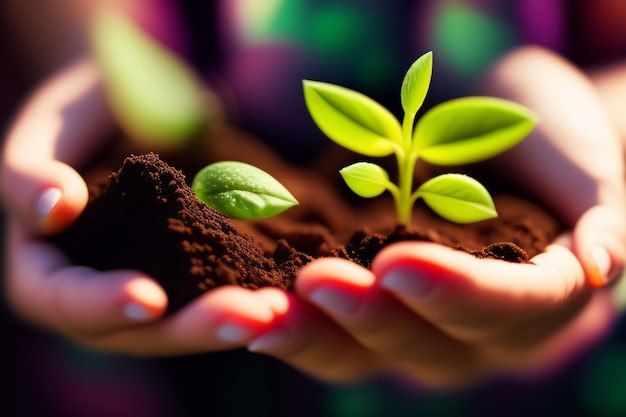Unpacking Climate Resilient Development - Takeaways for Policy Makers

On 20th March 2023, the International Panel on Climate Change (IPCC) released its sixth assessment report. The results are not promising, and the aspect that stood out the most is the limited amount of time we have left to act - the clock is ticking! We have a decade to implement the changes that will have an immediate impact as well as for the next thousands of years.
Despite this, we do have some hope. In fact, according to the IPCC, even unavoidable future changes can be mitigated to some extent by rapidly implementing Climate Resilient Development (CRD) strategies.
What is Climate Resilient Development?
The IPCC defines CRD as a solution framework that combines strategies of climate change adaptations with actions of greenhouse gas emissions reduction with the aim to achieve sustainable development. It can be viewed as a holistic approach that requires everyone's participation, including policy-makers, governments, citizens, private sector, civil society, and marginalised groups.
Key areas of change for CRD:
Achieving CRD requires implementing significant changes in five main areas that comprehend different aspects of our lives:
- Energy systems: the world's energy systems must undergo significant changes to achieve climate resilience. This requires a transition towards renewable energy sources and the reduction of greenhouse gas emissions.
- Land and fresh water: this includes measures such as afforestation, reforestation, and sustainable land use practices to mitigate the effects of climate change.
- Cities and infrastructures: they must be planned, built, organised and governed in an environmentally sustainable way. This entails the adoption of green building practices, the promotion of public transportation and the development of resilient infrastructures that can withstand extreme weather events.
- Economies and industries: they must undergo significant transformation. This means embracing circular economies, sustainable production and consumption practices, as well as the adoption of sustainable business models.
- Societal functions at local, national and international levels: this includes the adoption of sustainable lifestyles, the promotion of environmental education, but most importantly, the establishment of international policies and agreements to address climate change.
At first, it can be overwhelming to consider the radical changes required across long-established dynamics and relationships. Thankfully, CRD offers pathways to drive change and implement well-being, providing hope for a sustainable future.
Takeaways for policy makers:
Amongst the many aspects that should be taken into considerations, what follows is a section with three main elements that policy makers can prioritise:
- Reduce emissions rapidly and sustainably:
Human activities, especially the use of unsustainable energy and patterns of consumption and production, have caused global warming which has already led to widespread negative impacts on ecosystems and communities. Policy makers must prioritize the reduction of greenhouse gas emissions to mitigate climate change. To mitigate climate change, policy makers must prioritise the reduction of greenhouse gas emissions through rapid and sustainable means. Essential policies include promoting renewable energy sources, supporting low-emission technologies, and encouraging sustainable lifestyles. Current global financial flows for mitigation are insufficient to meet climate goals, especially in developing countries. Therefore, policy makers must explore new and innovative ways to finance the transition to a low-carbon economy. - Plan and implement adaptation strategies:
Climate change is already affecting many weather and climate extremes worldwide. Vulnerable communities that have contributed the least to climate change are disproportionately affected. Policy makers should prioritize the planning and implementation of adaptation strategies to manage the impacts of climate change. While progress has been made across all sectors and regions, adaptation gaps still exist, and hard and soft limits to adaptation have been reached in some regions. Maladaptation is also happening in some sectors and regions. Policy makers must ensure that adaptation strategies are multi-sectoral, inclusive, and long-term, with co-benefits to many sectors and systems. - Limit global warming to 1.5°C or 2°C:
Continued greenhouse gas emissions will lead to increasing global warming and the intensification of multiple and concurrent hazards. The likelihood of abrupt and/or irreversible changes increases with higher global warming levels. To limit warming to 1.5°C or 2°C, policy makers must prioritise deep, rapid, and sustained reductions in greenhouse gas emissions. This requires reaching net-zero CO2 emissions, which can be achieved by reducing emissions from fossil fuels and implementing strategies that remove carbon dioxide from the atmosphere. Policy makers must also consider the carbon budgets and greenhouse gas emission reductions required to limit warming to these levels, and ensure that mitigation policies and laws are consistent with these targets.
Conclusion
In conclusion, whilst the most recent IPCC report may have been daunting, there is hope for a sustainable future.
We can all take action to mitigate climate change by adopting sustainable practices in our daily lives. Policy makers must prioritize the reduction of greenhouse gas emissions through rapid and sustainable means, and businesses must embrace sustainable practices to reduce their carbon footprint.
By working together, we can achieve a net-zero carbon future and mitigate the impacts of climate change on ecosystems and communities worldwide. So let's take action now to protect our planet and ensure a sustainable future for generations to come. Policy makers must prioritize the reduction of greenhouse gas emissions through rapid and sustainable means, and businesses must embrace sustainable practices to reduce their carbon footprint. By working together, we can achieve a net-zero carbon future and mitigate the impacts of climate change on ecosystems and communities worldwide.